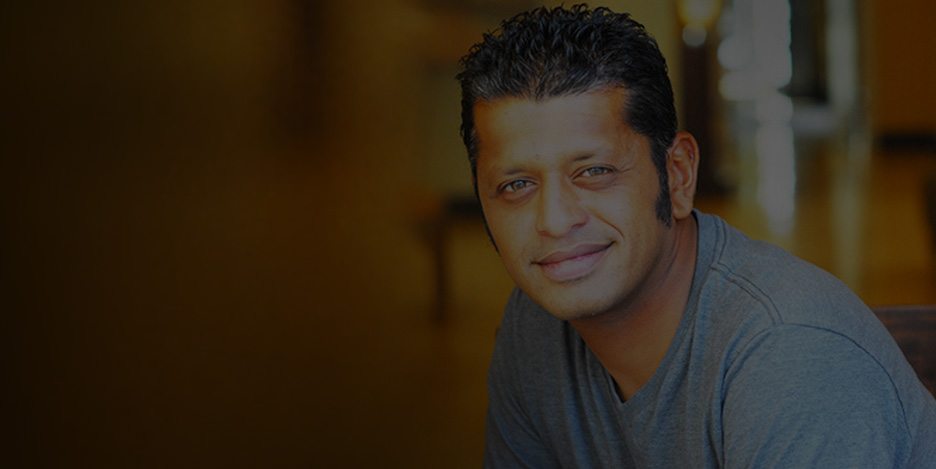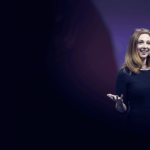This week’s guest on Famous Failures is Srinivas Rao.
Srinivas Rao is a bestselling author and the host of the wildly successful Unmistakable Creative podcast, where his guests range from Olympic athletes to bank robbers to trailblazing entrepreneurs. He self-published his first book, The Art of Being Unmistakable, which went on to become a Wall Street Journal bestseller.
His latest book is Unmistakable: Why Only Is Better Than Best.
You’ll learn:
- How an early failure launched Srini’s successful career as an author and speaker
- How Srini’s Facebook status updates turned into a Wall Street Journal bestseller
- How writing 1,000 words a day can change your life
What follows is an edited version of our conversation. I hope you enjoy it as much as I did.
In your book, Unmistakable: Why Only Is Better Than Best, you wrote, “Even if we fail, sometimes it’s taking two steps back that causes us to move 20 steps forward.” Can you give an example of a failure from your own life that fits that description?
The most relevant is the story of how I ended up with Unmistakable Creative and a career as an author and speaker. In 2006, I got rejected from every business school I applied to. So, in a last-ditch effort, I applied to Pepperdine.
If you look at pure rankings and statistics it’s a second-tier business school. There’s no arguing that fact. It’s not a Harvard, it’s not a Wharton.
It was a drastic contrast from being at Berkeley for undergrad, where I was surrounded by incredibly ambitious people. Most of my Berkeley friends went to very prestigious graduate schools, med schools, and law schools. Ending up at Pepperdine felt like a massive failure.
Graduating from Pepperdine in 2009 was also a rough go. There was nothing on the horizon. Only a very small percentage of our class had jobs upon graduation. Mark Burnett, the creator of Survivor, was our commencement speaker and we thought it was so fitting because we were about to experience a real-world version of Survivor.
Had that sense of nothingness not occurred, I wouldn’t have started my first blog and that wouldn’t have led to the podcast, and that wouldn’t have eventually led to this career as an author and speaker. Business school appeared to be a step back, and not having a job was another step back. But nine years later, here we are, 20 steps forward.
There’s a sort of lightness that comes with being in that dark place, because you have nothing. Since there were no options in front of me, I had to create them. That experience allowed me to see the possibility.
In your book you write about how you started a podcast in 2010, but you mention that it didn’t become truly unmistakable until 2014. I’d love to hear about the roadblocks that you experienced in that four year period, and how you overcame them.
The summer after graduate school, I joined an online course called Blog Mastermind created by Yaro Starak. Online courses can be highly effective, but so few people actually complete them. A significant percentage of people who buy these courses never do anything with it. Then there’s a percentage of people who take some action but then abandon it. And then you get a percentage of people who actually commit to the course. In the end, you’ve got a percent of a percent of a percent who are actually getting results.
If you want to be in that last group, the really simple secret is to actually do the material. Do it at a pace that’s reasonable. Most people try to bite off more than they can chew.
The structure of Yaro’s course worked well for me. Every week I had a lesson that took ten minutes to implement. It would be things like: install this plugin on your blog or, install WordPress. During the 13th week, the lesson was to interview another blogger. He ended up referring me to another blogger to interview. So I began interviewing up-and-coming bloggers. After several interviews, this project became BlogCastFM.
Over the course of the next three years the content started to morph a lot. The questions started to change, and I stopped being as interested in learning about business tactics. I got much more interested in people’s personal stories.
Then, in 2013, one of my mentors, Greg Hartl, came to work with me. He told me that I built an incredible body of work but that I didn’t have a brand identity. He told me the podcast wouldn’t survive unless I made a major change.
Simultaneously, I had been experimenting with a very different style of writing, creating these long Facebook status updates talking about anything that was on my mind. Those status updates became the foundation for my self-published book, The Art of Being Unmistakable.
Through a series of bizarre coincidences, the book ended up in the hands of Glenn Beck and landed me on the Glenn Beck show. It sold 15,000 copies and became a Wall Street Journal bestseller.
Greg then came up with a new brand name, Unmistakable Creative. I bought the domain and began the entire rebrand process. We wanted to create a very distinctive look and feel. We ignored what everybody else was doing and tried to do something that really stood out. We went from your typical cookie-cutter podcast website to this highly visually engaging website.
With that came a change in content as well. We went from being the podcast for bloggers to a show of candid conversations with insanely interesting people. The idea of Unmistakable Creative was all-encompassing: we could interview entrepreneurs, we could interview social scientists or we could interview people who just had weird stories, like the guy who robbed 30 banks in 14 months.
Suddenly we had a much more expansive sense of possibility. We profile one of the widest ranges of guests of any podcast out there. We pride ourselves on the fact that when you listen to our show, you’re going to hear people you haven’t heard anywhere else.
The tendency, regardless of the industry you’re in, is to look over the shoulders of your competitors and figure out what everybody else is doing and then emulate them. But the thing about the center is – it’s too crowded. It’s only when you go to the edges and embrace your distinctive qualities that you became, as you call it, unmistakable.
It’s such a hard thing to get your head around. The tendency is to look at people who have accomplished things and try to do exactly what they did. This fails to take into account one very, very big variable: you. We completely disregard the things that would make us unmistakable when we do that.
You eventually moved from self-publishing to traditional publishing. I’d love to hear about that transition and the roadblocks you experienced along the way.
The self-published book did really well. We had this crazy momentum behind it. We sold out a 60-person, two-day conference right after publication. But the spotlight faded. My friend Kamal says, “When things are going really well, it feels like it’s going to last forever. When things are going terrible, it feels like it’s never going to end.”
I went from the heights of success to experiencing a lot of personal challenges. I was dealing with severe anxiety and depression, and nearly ran the business into the ground at the end of 2014. But the success of the self-published book caught the attention of an editor at Penguin.
It was kind of a Cinderella story that I got picked. I didn’t have to court a publisher. It’s a very different feeling when somebody is courting you. I’m eternally grateful for that. But the non-Cinderella reality is that it took seven years. It didn’t come easily. I still had to work.
I just wrote a piece titled “The Seven Hard Truths About Building a Creative Career” about how people who have not had creative success see it as a moment of arrival where the work stops and everything gets easier. But what you realize in that moment is that the work is just beginning. The stakes are so much higher. The pressure is on in a different way, and you really want to deliver for the people that have bet on you. You don’t want to let them down.
You’re a prolific writer. You wrote a viral Medium post about how writing 1,000 words a day changed your life. How do you fail when it comes to writing?
The thing you have to look at is how you define failing. To not write would be failure.
You also have to know that every day you’re going to fail in some way, because a good amount of what you write is lousy. But when you’re doing it every day, you don’t need that much of it to be good. And that’s incredibly liberating.
As Seth Godin says, “A small thing repeated is not a small thing.” 1,000 words a day quickly adds up.
Adam Grant actually discovered this in his book Originals. He said that the most creative people were the ones who created the highest volume. Cumulative output matters more than any individual thing that you do.
Are there any parting thoughts that you’d like to share?
Don’t let the options in front of you blind you from the possibilities that are all around you.
Bold



